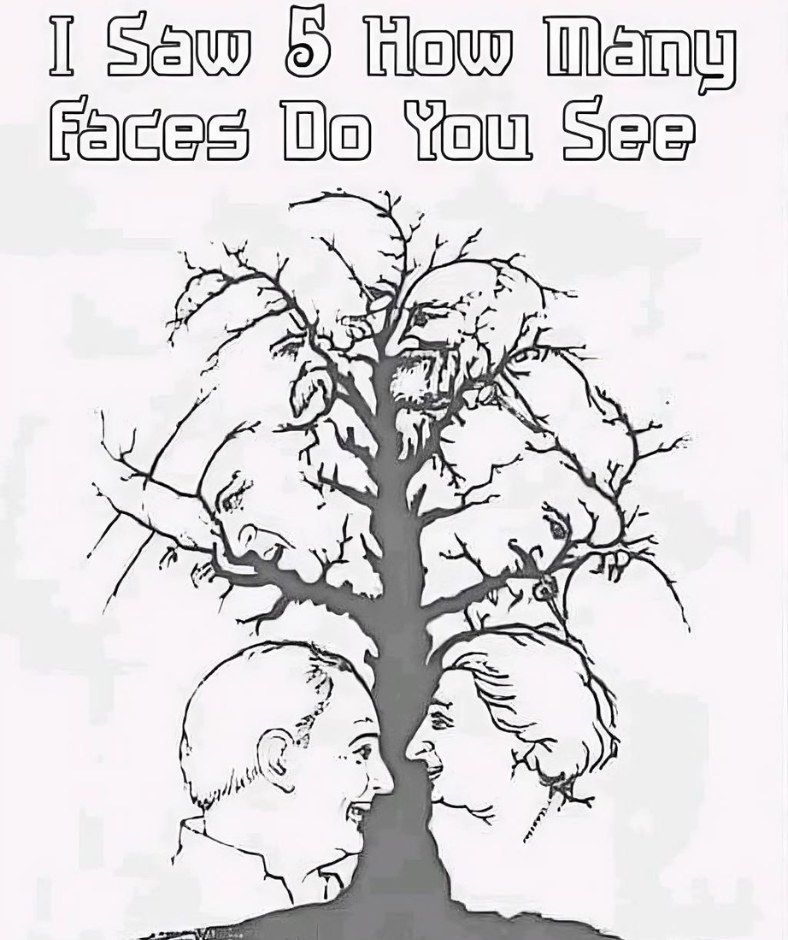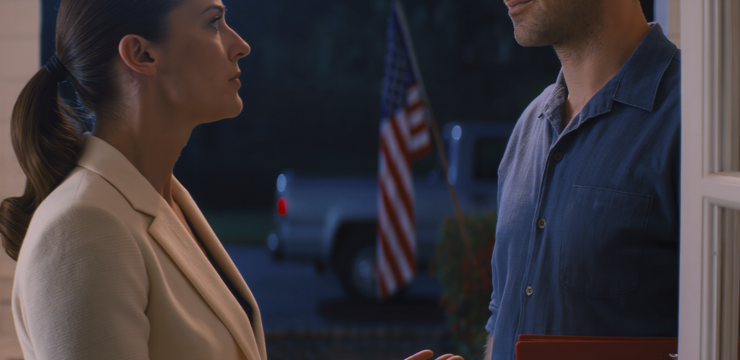If you managed to find all the hidden faces in this classic optical illusion in less than 10 seconds, you might just belong to the elite 1% of people with razor-sharp visual perception. Known as the “Tree of Faces,” this mind-bending image has captivated viewers for more than a century. Though it may look like an ordinary drawing of a tree at first glance, this illustration is anything but simple.

Embedded within the branches and leaves are the cleverly disguised faces of multiple historical figures, and spotting them all in a short amount of time is no small feat. Unlike typical puzzles that test logic or memory, this challenge pushes your perception to its limits, playing on how your brain interprets visual information. It’s an artful blend of psychology and creativity that has stood the test of time and recently gone viral again for good reason.
Here’s how it works: you’re asked to stare at the image for 10 seconds and count how many faces you can identify. If you spot all of them during that window, congratulations—you’ve demonstrated exceptional attention to detail and lightning-fast pattern recognition, traits often associated with top-tier cognitive performance. But before you get discouraged if you didn’t catch them all right away, let’s dig into why this illusion is so tricky. Our brains are wired to recognize broad shapes and familiar patterns quickly, especially when identifying things like faces, but we also tend to focus on the “big picture” rather than on tiny, hidden elements.
The Tree of Faces takes advantage of this by using natural textures, light shading, and the organic shapes of leaves and branches to camouflage the human features. The illusion relies heavily on the way our minds interpret images—when we assume we’re just looking at a tree, our brain filters out anything that doesn’t match that assumption. That mental shortcut, while helpful in everyday life, actually works against us here. Another reason this illusion stumps people is that it blends foreground and background in such a seamless way. The artist skillfully hides the faces using subtle contrast and shape manipulation, so that even when you’re staring right at them, they can be easy to miss. And it’s not just about eyesight—it’s about how your brain processes what you see. Cognitive scientists call this phenomenon inattentional blindness, where focusing on one part of an image causes you to overlook other important details. This means that unless you’re deliberately scanning the image section by section, you’re likely to miss the hidden faces entirely.
In most versions of this puzzle, there are said to be ten or eleven faces, though not everyone agrees on the exact number or identities. Some interpretations claim to recognize well-known figures such as Margaret Thatcher, Mikhail Gorbachev, and several Indian political leaders woven subtly into the artwork. This ambiguity fuels even more fascination and debate, adding to the illusion’s charm. But what makes these kinds of images so captivating, generation after generation? For one, they play into our natural love for mystery and discovery. There’s something incredibly satisfying about spotting something hidden that others might miss—it feels like solving a tiny personal mystery. These illusions also serve as brain workouts, encouraging us to think differently and look deeper. They remind us that perception is subjective, and that two people can look at the same image and see completely different things. Want to improve your own perception skills? Try scanning images slowly and methodically, breaking them down into sections rather than trying to take it all in at once. Shift your focus from background to foreground, and look for shapes that don’t quite belong—faces usually have distinct symmetry and curves that nature doesn’t often replicate perfectly. You can even try adjusting the lighting or your screen angle to reveal more subtle contrasts. Over time, your brain can become more adept at recognizing hidden details, not just in puzzles but in everyday situations. So whether you aced the Tree of Faces challenge or found yourself scratching your head, the key takeaway is this: our brains are powerful, but also full of quirky shortcuts that can sometimes lead us astray. The beauty of illusions like these lies not just in the challenge but in what they reveal about how we think, what we prioritize, and how we interpret the world around us. Next time you’re presented with a seemingly simple picture, take a second look—you might just find that the truth is hidden in plain sight.





